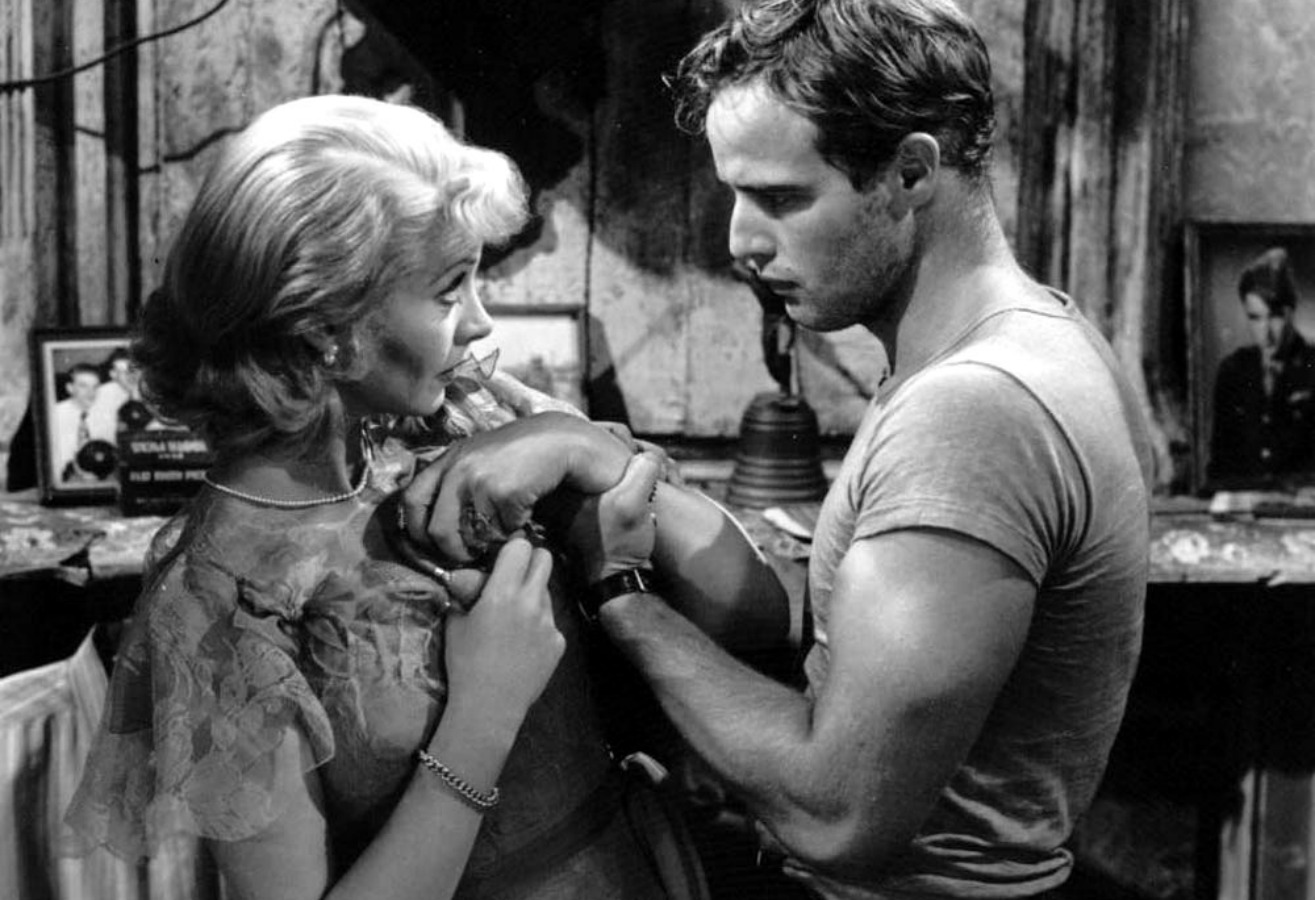Squaring the Circle
We’re all familiar with the following scenes: the nervous breakdown, the psychotic episode complete with the thrashing of limbs and wild cries, the fall to rock bottom that lands in a back alley with broken bottles and/or syringes scattered about. When mental illness is the subject of film, theatre, or television, we are most often presented with the dramatic moments. It makes sense: we love a linear story that builds to that dramatic turning point, usually followed by a coda that points the way to the character’s recovery. And when the story ends, we can turn to one another and explain Blanche’s psychotic break as a direct result of Stanley’s brutality. Fantastic, shall we get drinks after the show?
Living with mental illness is rarely linear.
My thoughts move in circles. There’s some kind of imbalance of brain chemicals in my head that makes it easier to fall into negative thinking, which in turn creates powerful neural pathways that augment the negative thinking. Every thought races through a pathway and loops, turning into a new, worse thought. I imagine these pathways are labyrinthine, all ending in the same cul-de-sac. At least, I seem to always be catching myself thinking the same things (I am terrible, everyone thinks I am stupid, I am stupid, I am terrible, etc.) over and over again. My thinking is also full of logical inconsistencies and irrationality; negative thinking is not what you would call evidence-based. And while my many interventions can interrupt the circle for a time, it eventually resolves itself, heads back to the same cul-de-sac. I have clinical depression and, more or less, I always will.
The science on clinical depression isn’t 100 percent solid yet. There’s an awful lot we don’t know about brain chemistry; medication, therapy, and other holistic treatments are really only our best guesses based on incomplete information. As we learn more, perhaps we will be able to do more to treat clinical depression and other illnesses. In the meantime, I constantly feel like I’m floundering. I have periods of high functionality—treatments can have a positive impact, imperfect though they may be—but I can only function for so long before everything falls apart on me. With every repetition of the cycle, it gets worse.

Cosette Derome and Lucy Hill in the foreground; Philippa Domville and Stephanie Jung in the background. Photo by Robert Harding.
The cyclical, day-to-day experience is what I feel is often missing from stories about mental illness. It was this experience that I wanted to capture in my play, Salt. In some ways, it’s what I struggle with most. I have been known to sardonically lament my inability to have a nervous breakdown; nervous breakdowns are sexy. At least if I had a nervous breakdown, and was hospitalized, other people would get that there’s something wrong with me, and there would be some catharsis, some end to the illness. I’ve never needed dramatic medical intervention (for which I am lucky); my experience is more ordinary. I practice all my self-care techniques, do okay for a while, then shut down when merely coping is too much. Stay in bed until the worst is over. Then I get up and it starts all over again. I’m in a loop. I don’t want to be in a loop, but I am. So how, exactly, do I represent an experience that is by nature repetitive, cyclical, and irrational in an artistic medium that is most often linear?
In Salt, two teenage sisters and their alcoholic mother flounder through their lives, all dealing with differing degrees of addiction, depression, and PTSD. Their illnesses feed on each other, their hopes and fears are all tangled together, and everything they try fails. There are plenty of emotional confrontations in the piece, plenty of dramatic moments, but what I really wanted to explore was the notion that these characters have to deal with all the regular life shit that anyone would have to deal with at the same time as their brains are compromised. The central problem for the sisters, which they talk about starting in their first scene together is, how do they leave their alcoholic and abusive mother. Early workshop audiences often asked: Why don’t they just leave? What is the problem? The answer was simply that they can’t. They can’t see the way out through the labyrinth of negativity in their heads, even though they want to, something I understand on an intuitive level. Mental illness is not a problem you can think your way out of. I had to tease out how to show their inability to move forward and their struggle to try to overcome that inability. And the toll it takes to persist in this struggle. This became the spine of the play, the closest thing to a traditional narrative arc as the play gets. Every time they fail to leave, it gets harder to try and muster up the fortitude to try again. Every repetition makes it worse.

Lucy Hill in Salt. Photo by Robert Harding.
For the past several months, I’ve been refining the script with director/dramaturg Briana Brown as we move into production. Our ongoing conversation is about how to immerse an audience in the cyclical nature of these often-stigmatized illnesses while still giving them enough of a traditional arc to hold on to. Briana has a rare sensitivity to the material and understands what I’m after. She also knows that the audience needs a thread to follow, or else they will be lost. Really anyone, no matter how well-versed they are in mental illness, needs something to follow when looking from the outside into someone else’s inner world. Between us, we are striving to find a balance point between remaining truthful to the cyclical experience of mental illness and successfully communicating that experience to audiences who potentially have no connection to (or a distorted view of) it. This last bit makes me want to scream whenever we start talking about whether an audience will understand a particularly illogical aspect of the experience: The experience is irrational! But I don’t scream, I try to listen. Briana calmly says that while life is complicated and nuanced, we sometimes need the play to be clear. She draws a delicate distinction between the play and my real-life experience without negating my need for authenticity. I realize I have to try and see the play from the point of view of an audience member who doesn’t understand this experience. It’s the least I can do, given that I’m asking them to take a long look at something that is perhaps incomprehensible to them. In the end, I want them to walk away with some nugget of understanding.
We are now in the midst of rehearsals with a group of incredible actors who ask penetrating, difficult questions, and the process continues. There are varying degrees of familiarity with addiction and mental illness in our ensemble, and the actors have a keen sense of what the traditional arc feels like. Together, with all of these perspectives at the table, we grapple with the material. The actors look for motivations for irrational behaviour that are rooted in truth, finding unexpected layers of love in actions that look (and are) horrific from the outside. With their tactics and actions, they mine the discrepancy between the characters’ expected result from those actions and the actual outcome. What the audience sees is deeply damaging behaviour, but what the actor plays is an action that comes from love. They look for the linear, moment to moment, and it’s the speed with which these characters move from one objective to another, and back again, that creates the sense of the cyclical experience. Though it changes, the linear becomes an anchor for the actors in the middle of the play’s chaos. It allows the characters to feed into each other’s illnesses, perpetuating the cycle. Using this linear approach, the actors find new depths in the repetitive beats, raising the stakes and showing us what it’s like to live with these illnesses, day in and day out. They provide the thread for the audience to find their way through the labyrinth of the play, illuminating an aspect of the complex and multifaceted experience of mental illness that is often overlooked in traditional representations. Mental illness, and those living with it, deserve to be represented in a way that embraces this complexity.
Salt is on until September 28 at the Alumnae Studio Theatre.
Click here for tickets or more information.









Comments